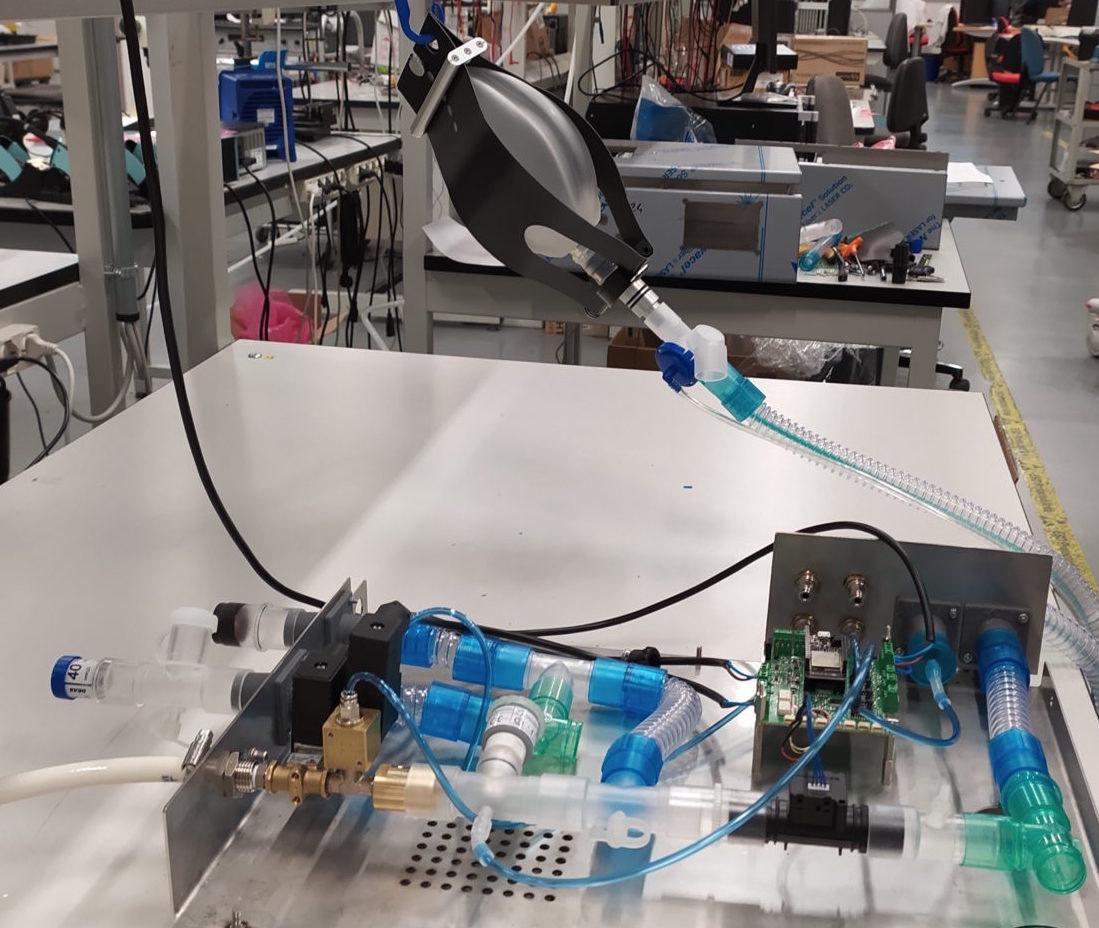UMass Amherst physicist works with global team sharing technology against COVID-19
AMHERST, Mass. – To address the COVID-19 pandemic, particle physicist Andrea Pocar at the University of Massachusetts Amherst and an international team of “Dark Matter” scientists are now designing and circulating plans for a simplified mechanical ventilator. They offer an adaptable device using parts found almost anywhere, Pocar says.
He says the group already has seen “a lot of interest” from such countries as India, South Africa, Bolivia, Ecuador, Brazil, Mexico, Iran and Indonesia. Pocar is particularly interested in helping to introduce U.S. firms and organizations who may wish to build the ventilators as well as in securing regulatory approval.
He adds it is not such a stretch to imagine physicists creating respiratory-assist machines, noting that physicists are trained to simplify complex problems and not give up until they have a plan.
Further, Pocar says, “One of the things in particular about experimental particle physicists is that we build our own stuff, one-of-a-kind instruments, and we program unique electronics for our experiments. We regularly involve engineers, and people like me who specifically work on dark matter and rare-event physics work with gases and fluids all the time. We’ve spent a lifetime using high-end pressure- and flow-control valves and sensors, and we know what clean means, without contamination. Turning to solve a problem like a ventilator felt very natural.”
The project initiative came first from Italian physicists led by Cristiano Galbiati of Princeton University and Gran Sasso Science Institute L’Aquila, Italy, a college classmate of Pocar’s. Galbiati also recruited astrophysicist Arthur McDonald of Queen’s University, Ontario, and others from “DarkSide 20k,” an international astrophysics dark matter detection program. More than 250 physicists, engineers, physicians and others in 12 countries are now collaborating online in subgroups. Like Pocar, many had spent the past decade or more designing instruments to collect, purify and liquefy argon for their detectors.
The scientists call their device the Mechanical Ventilator Milano (MVM). It uses electricity and compressed oxygen or oxygen-plus-medical air, valves, tubes, connectors to a hospital supply and expiration tubes. Pocar says, “The MVM device was designed with supplies that are readily available in Italy, Europe, Canada and the U.S. Each country will have to adapt it to what they can cope with at a time when global supply chains are disrupted.”
One key MVM group is developing and programming the ventilator’s control and monitoring unit, while Pocar is working with the project’s international engagement committee. Their task is to manage inquiries now coming from many countries, to identify where project help is needed and to provide guidance for those who want to build open-source, patent-free devices in their region.
Another of the project’s working groups is shepherding the device through the regulatory processes with the U.S. Food and Drug Administration for emergency equipment, Pocar notes. “Governments will eventually have to buy these things, and they must meet strict standards. We’ve tried to anticipate those so it can quickly pass an accelerated certification process. They’re also working on a user manual, documentation, parts list and standard international symbols that must be used.”
“FDA certification will be key because other agencies will recognize that process and trust it, shortening the time the MVM could be used on patients that need it,” he adds.
In addition to Italian government officials and scientists at Health Canada and Canadian national laboratories, the MVM team is working with the lead U.S. national lab for accelerator-based particle physics, the Department of Energy’s Fermilab in the Chicago area, and with the U.S. Air Force on FDA certification of the device, Pocar says.
He emphasizes that everyone connected with MVM has pledged to strictly guard against any privatization or production-for-profit of the device. “We are all working as hard as we can to prevent anyone from trying to patent this. We are publishing our designs and plans on open-source platforms following the CERN Open Hardware License and making it known that it must be kept open.”
Pocar says his next step is to try to facilitate wide availability of the device design and documentation in other countries and to “try to facilitate as much as possible the seeding of entrepreneurship around this device. The intellectual property behind it would come for free for whoever wants to use it.”
FONTE: https://www.umass.edu/newsoffice/article/rare-event-physicists-italy-canada-and-us
